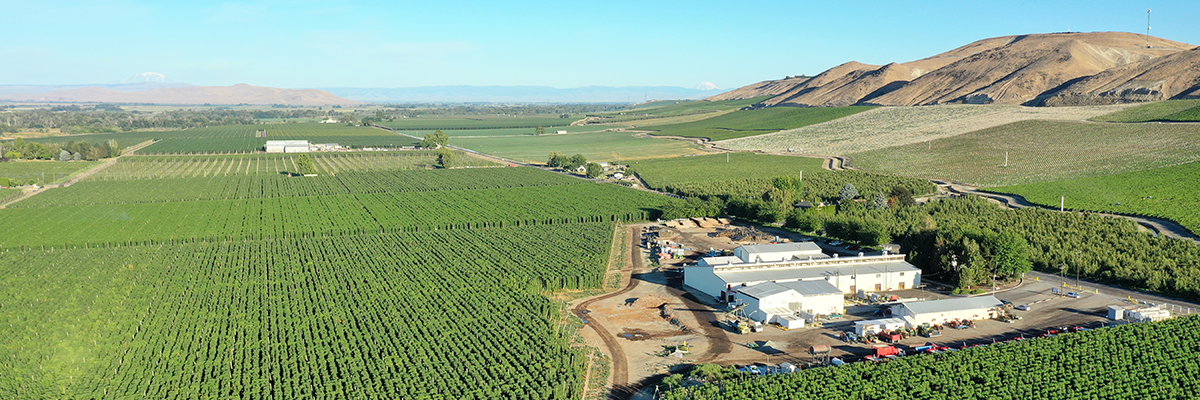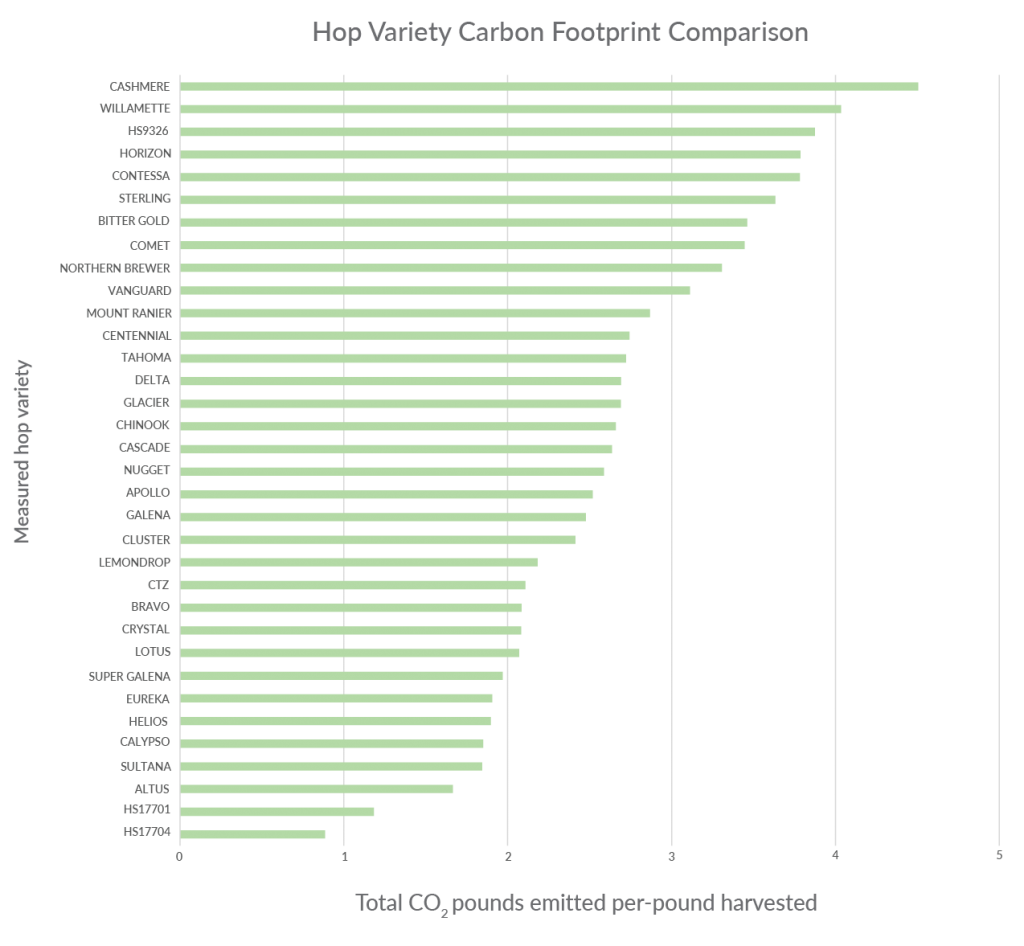Earth Day – responsible farming
The Origin of Earth Day
The first Earth Day was held in 1970 when millions of people across the United States came together to advocate for a healthy and more sustainable environment. Since then, Earth Day has grown into a global movement, with millions of people from over 190 countries participating in events and activities to raise awareness about environmental issues and promote sustainable practices.
The Agricultural Effects
Agricultural farming has both positive and negative effects on the planet. On the positive side, farming provides a means of producing food, fiber, and other essentials for human survival and economic development. It also provides jobs and financial security for millions of people around the world. The Yakima Valley alone produces the majority of our nations hops and is just one major agricultural crop amongst dozens more from the region we call home.
Agricultural effects can also have some negative implications. Identifying and understanding those impacts is the first step in making a change. There are four impacts we take seriously when farming:
- Land use
- Water use
- Greenhouse gas emissions
- Resources
To mitigate the negative effects of agricultural farming on the planet, we have implemented several sustainable farming practices that involve using techniques to promote soil health, reduce resource use, conserve water, and minimize pollution. Sustainable farming practices can help protect the environment and promote long-term sustainability while still meeting the needs of supply demands.
Sustainable Farming and Reduced Carbon Footprint
Innovation and Research Development are at the core of our operations. Hopsteiner has a dedicated team of hop scientists and agronomists who work year-round to addresses the challenges of sustainable farming practices.
Farming inputs such as fertilizer, fungicides, insecticides, and irrigation water are major contributors to our environmental impact of hop production. In an effort to reduce the use of these inputs, our R&D team and breeding program have utilized an understanding of the hop genome to select hop varieties for their natural traits such as resistance to downy and powdery mildew. Leveraging tools like historical data, molecular markers, phenotyping, genome observation, and predictive analytics, so we can breed and cultivate hop varieties that are higher yielding, disease-resistant, and require less land to grow them on. For example, varieties that require less fertilizer or downy-mildew spray, require less attention for chemical use and water use, dropping the overall carbon footprint associated with that variety.
High-yielding varieties have been pivotal to our sustainability efforts, enabling us to maintain crop yields on less cultivated land and therefore increasing our resource-use efficiency. Most recently, we have implemented drip irrigation lines throughout our fields that are monitored by over 100 soil moisture probes to help automate and reduce water use.
We all share the same home here on earth, and our team at Hopsteiner is dedicated to caring for it. Earth Day is a crucial time of year that reminds all of us that we need to protect Earth’s natural resources for all future generations to come. As a 6th generation family-owned company, we know just how important that is. Our team not only offers the most sustainable hop varieties in the world but also continually improves our farming practices to better care for the land that gives us these fruitful bounties. Below is a CO2 use hop variety comparison chart:
Regenerative Farming Practices
Regenerative agriculture is a farming practice that focuses on restoring soil health and biodiversity while producing food sustainably. The goal of regenerative agriculture is to create healthy, resilient ecosystems that can sustain themselves long-term. By building soil health and increasing biodiversity, we can reduce the need for synthetic fertilizers and pesticides drastically. Our current regenerative efforts are extensive and include:
- Cover crops – When growing seasonal plants, it’s important to maintain soil health during off-seasons. The best way to do this is to plant cover crops. This practice reduces soil erosion and nutrient runoff. Cover crops also out-compete weeds, reducing the need to till before planting seasons, which can greatly lower CO2 emissions.
- Integrated Pest Management (IPM)—This is an ecosystem-based strategy that focuses on the long-term prevention of pests or their damage through a combination of techniques such as biological control, habitat manipulation, modification of cultural practices, and use of resistant varieties. We currently practice habitat manipulation by releasing beneficial predator insects that target pests who harm hops.
- Application of dairy manure and hop leaf trash—These natural forms of fertilizer are high in organic matter and allow us to reduce our use of synthetic fertilizers as well as improve overall soil health. Manure applications also help dairies safely dispose of their waste. Our state-of-the-art group of combines play a key role here, because, unlike other facilities that take the whole hop bine to a processing plant to strip the cones, our combines strip the hop cones from the bine in the fields, leaving behind plant matter that returns nutrients to the soil as it breaks down after harvest. Any leaf trash not left in the field is easily sorted from the hop cones by our picking machines and is applied back to our fields as a green fertilizer.
- Drip irrigation with moisture probes—our fields are equipped with drip irrigation lines and moisture probes that allow us to closely monitor soil moisture levels and adjust irrigation applications in real-time, lowering our water usage significantly.
- Aerial and satellite imagery to manage crop stress— Crop health imagery must be actionable to have an impact on the land. Closely monitoring our hop fields from above enables us to identify weak production areas in our field where we focus on improving soil health and land productivity. Crop imagery also allows us to identify plant stress before it is visible to the naked eye and rapidly respond to these stresses, resulting in greater productivity and increased input use efficiency.
- Petiole sampling—we currently perform petiole sampling to analyze the plant nutrient makeup in real-time and compare to optimum nutrient levels. This allows us to properly manage our fertilizer amounts and sources to prevent nutrient toxicities and deficiencies.
From our roots in 1845 in southern Germany to becoming the global hop dealer, grower, and processor that we are today, Hopsteiner has always understood the value and imperative of long-term thinking. Long-term thinking is at the core of our business and has served us well over the decades. We have 177 years of knowledge and experience based on patience and proper execution and we stand ready to manage the challenges of the future. As an industry pacesetter, we recognize the urgency of leading by example in quality and service, in the stewardship of our human and natural resources.
Our Certifications:




